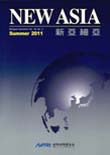학술논문
‘북방한계선’ 논란, 무엇이 문제인가?
이용수 187
- 영문명
- Telling the Truth about the Northern Limit Line
- 발행기관
- 신아시아연구소(구 신아세아질서연구회)
- 저자명
- 이동복(李東馥)(LEE Dong Bok)
- 간행물 정보
- 『신아세아』新亞細亞 第19卷 第4號, 27~59쪽, 전체 33쪽
- 주제분류
- 사회과학 > 정치외교학
- 파일형태
- 발행일자
- 2012.12.30
6,760원
구매일시로부터 72시간 이내에 다운로드 가능합니다.
이 학술논문 정보는 (주)교보문고와 각 발행기관 사이에 저작물 이용 계약이 체결된 것으로, 교보문고를 통해 제공되고 있습니다.

국문 초록
영문 초록
The Northern Limit Line(NLL) was drawn unilaterally by the United Nations Command(UNC) on August 30, 1953, 34 days after the armistice of the Korean War that had gone into effect on July 27 without military demarcation lines(MDLs) drawn on the seas east and west of the peninsula. However, substituting the MDL in the militarily sensitive zone of the West Sea of the Korean Peninsula, the unilateral UNC measure quickly secured its relevance as an integral element of the Korean War armistice regime as it effectively filled up the critical vacuum created by the failure of the Armistice Agreement of 1953 to draw MDLs separating the two belligerent parties on the seas east and west of the peninsula.
For twenty years, between 1953 and 1973, North Korea did not take any action challenging the efficacy of the NLL. Instead, North Korea left numerous footprints during the twenty-year period that showed Pyongyang not only acknowledging but also recognizing, if not accepting as well, the existence and validity of the NLL, allowing it effectively to function as a boundary line dividing the seas east and west of the peninsula into two zones controlled respectively by the two sides of Korea. It was in 1973, however, when North Korea began mounting concerted diplomatic as well as military moves challenging the validity of the NLL.
The NLL was raised by Pyongyang as one of the main issues for negotiation at the inter-Korean prime ministerial talks, the ‘North-South High-level Talks’ by calling, in the early years of 1990s, as North Korea, holding that the NLL allegedly lacked in legitimacy having been drawn unilaterally by the UNC without North Korea’s consent, demanded that a “new maritime demarcation line” of North Korea’s own drawing be accepted by South Korea in the West Sea to replace the NLL.
North Korea failed, however, to prevail at the inter-Korean prime ministers’ talks on this issue as the two sides agreed in Article 11 of the “North-South Agreement on Reconciliation, Non-aggression, Exchange and Cooperation” (“North-South Basic Agreement” by abbreviation) that had gone into effect as of February 19, 1992, that the two sides would “continue to honor the military demarcation line stipulated by the Armistice Agreement of July 27, 1953, and the zones controlled heretofore by the two sides respectively as the boundary line and zones of non-aggression.” By accepting this article in the Basic Agreement, North Korea has left it indisputable that, at least for the time being, Pyongyang was accepting the NLL as the line that divided the seas into two “zones.”
North Korea renewed, at the ensuing round of the inter-Korean prime ministers’ talks held later in September 1992, its attempt to draw a new maritime military demarcation line to replace the NLL through agreement between the two Koreas. However, the renewed North Korean attempt was thwarted again as it was found to be grossly in conflict with Article 5 of the Basic Agreement under which the two sides were bound by agreement that, while they would “jointly endeavor to have the current state of armistice replaced by a state of permanent peace,” they would “continue to abide by the current Armistice Agreement until the time when such a state of permanent peace is realized.”
As the Northern demand that a “new maritime MDL” be drawn on the West Sea was tantamount to amending the Armistice Agreement of 1953, it was expressly not an issue that, under Article 61 of the Armistice Agreement, the two Koreas were authorized to deal with between them. With the two Koreas having agreed in the Basic Agreement(Article 5) to “continue to abide by the current Armistice Agreement until it was replaced by a state of permanent peace,”
목차
Ⅰ. 서해 ‘북방한계선’의 기원
Ⅱ. 북한측 대응의 변화
Ⅲ. 남북고위급회담과‘북방한계선’
Ⅳ. 제2차‘남북정상회담’과‘10.4 남북공동선언’
Ⅴ. 이명박 정부의 출범과 경화(硬化)하는 남북관계
Ⅵ. 대선(大選)의 쟁점이 된‘북방한계선’논란
Ⅶ. 쟁점 별로 살펴 본‘북방한계선’논란
[English Abstract]
키워드
해당간행물 수록 논문
참고문헌
교보eBook 첫 방문을 환영 합니다!

신규가입 혜택 지급이 완료 되었습니다.
바로 사용 가능한 교보e캐시 1,000원 (유효기간 7일)
지금 바로 교보eBook의 다양한 콘텐츠를 이용해 보세요!





